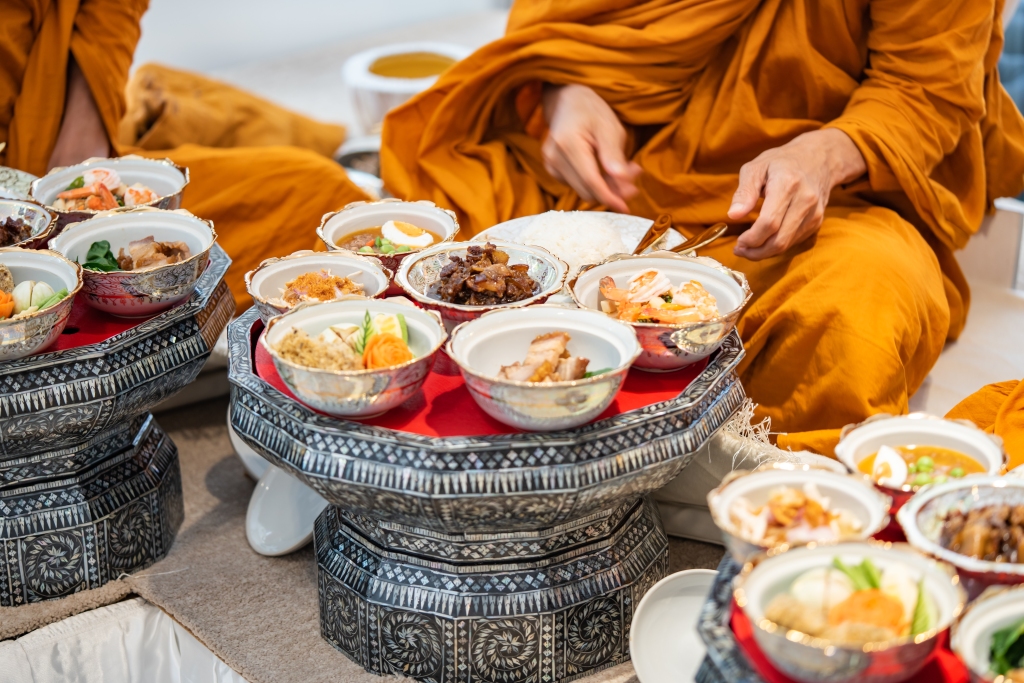In the quiet interiors of Chinese Buddhist monasteries, where time flows in rhythm with the breath, a dish has endured for over a millennium—less as a recipe than as a meditative act. Known as Luóhàn zhāi, or “Buddha’s Delight,” this vegetarian preparation is one of the most intricate expressions of East Asian plant-based cuisine. What appears to be a simple vegetable medley is, in fact, a codified and symbolic composition—one that reflects centuries of culinary technique, philosophical values, and cultural transmission.
Origins in Monastic Practice
The roots of Luóhàn zhāi stretch back to the early spread of Buddhism from India to China via the Silk Roads. As early as the Han dynasty (206 BCE–220 CE), Buddhist monasteries became not only spiritual hubs but also spaces of agricultural innovation and dietary redefinition. The rise of monastic vegetarianism was shaped by both doctrinal ethics and ecological realities. In periods of scarcity, plant-based diets served entire communities without the burden of animal sacrifice or strain on fragile ecosystems.
Central to the Buddhist monastic diet is the principle of ahimsa – non-violence. In Mahayana Buddhist communities, this translated into the elimination of meat, fish, and any food perceived to cause suffering to sentient beings. In imperial China, where meat signified wealth and authority, such dietary restraint represented a quiet but profound cultural divergence. The monastic table became an extension of ethical practice – a space for mindfulness and restraint.
But absence did not mean austerity. Within temple kitchens, tofu, wheat gluten, mushrooms, seaweeds, and root vegetables were transformed into elaborate analogues of meat-based textures and flavors. These culinary innovations were not intended to deceive but to demonstrate that flavor could arise from ingenuity and ethics. Dishes such as “Buddhist chicken,” mock ribs, and konjac-based “prawns” exemplify this tradition of compassionate craftsmanship. Luóhàn zhāi, the most emblematic of such creations, became a culinary manifesto long before the term “ethical eating” entered modern discourse.
Symbolism in Composition

The name Luóhàn zhāi refers to the Eighteen Arhats (luóhàn in Chinese), enlightened disciples of the Buddha in Mahayana tradition. The number 18, considered auspicious, informs the dish’s classical form – eighteen plant-based ingredients, each imbued with symbolic significance. Shiitake mushrooms represent longevity and inner strength; bamboo shoots signal spiritual growth; lotus roots evoke purity emerging from the mud of ignorance.
Prepared in silence and often preceded by chanting or recitation, the dish is a vehicle for awareness. For many monastic cooks, the kitchen is a place of internal cultivation as much as external nourishment. Techniques emphasize precision and attention: each ingredient is traditionally stir-fried separately to preserve its distinct Qi (vital energy), then assembled in balanced harmony.
Secular Adoption and Courtly Recognition
By the Tang (618–907 CE) and Song (960–1279 CE) dynasties, Buddhist vegetarian cuisine began influencing elite dining outside the cloister. Drawn to its elegance and restraint, emperors occasionally included monastic dishes in courtly banquets. The temple kitchen gradually shaped urban culinary trends, especially during periods of syncretism with Taoist traditions. Noble families adopted vegetarian customs on designated lunar dates, and the first temple-inspired vegetarian restaurants emerged in China’s cities.
From there, Luóhàn zhāi followed the migration of Chinese communities—first across East and Southeast Asia, then globally through diaspora networks. Today, versions of the dish appear in Chinatowns from Vancouver to Melbourne.
Adaptation and Dilution
Yet with travel comes transformation. Outside the temple context, Luóhàn zhāi often becomes simplified – reduced to a generic stir-fry of assorted vegetables with soy sauce, stripped of both its symbolic intent and culinary rigor. Core elements such as fermented red tofu – valued for its depth of flavor and ritual role – are commonly omitted. The traditional method of cooking each component separately is frequently bypassed, sacrificing the dish’s energetic structure.
What remains is a poetic name, but a diminished experience.
Revivals and Contemporary Significance
In recent years, a renewed interest in ritual cuisines has sparked efforts to reclaim Luóhàn zhāi in its fuller expression. Some chefs, often trained in monasteries or working closely with monks, are reviving its techniques and meanings. Their approach goes beyond reproduction of a recipe—it is a deliberate return to process: cooking as meditation, eating as ethical engagement, nourishment as cultural continuity.
Monastic centers such as Mount Wutai and Mount Emei have initiated training programs to transmit these practices to younger generations. During Lunar New Year celebrations, many Chinese households continue to prepare Luóhàn zhāi as a gesture of renewal and intention. In some communities, the first bowl is symbolically offered to ancestors—linking culinary action with intergenerational remembrance.
A Model for a Changing World
What gives Luóhàn zhāi enduring relevance is not only its historical lineage but also its alignment with contemporary values. In an era increasingly attentive to plant-based diets, sustainable food systems, and culinary identity, this thousand-year-old dish provides a compelling model. It demonstrates how complexity and restraint can coexist, how culinary art can emerge from ethical principles, and how food can be both story and offering.
In a world that often prizes immediacy and individualism, Luóhàn zhāi proposes a different rhythm: patient, intentional, and quietly transformative.





